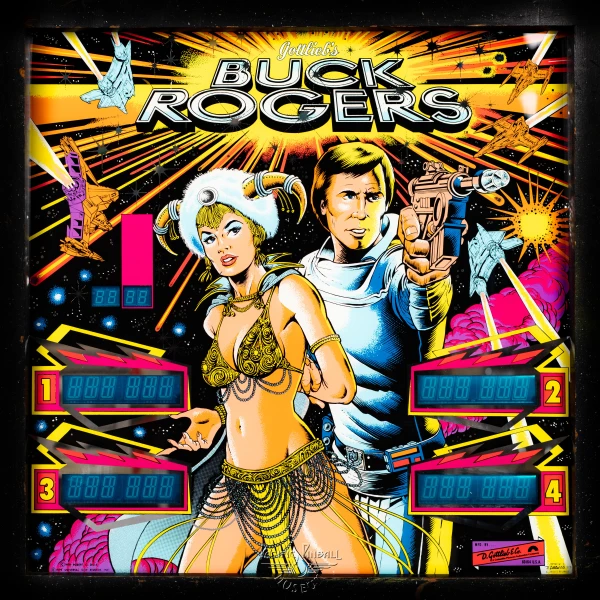Buck Rogers
Buck Rogers Preview Image

Machine Details
Manufacturer
n/a
Year
n/a
Technology Era
n/a
Machine Description
Content Under Review
Help us improve this content
Your support accelerates our content verification efforts.
Support Our WorkBuck Rogers, released by D. Gottlieb & Co. in 1980, represents a significant entry in both pinball history and licensed sci-fi gaming. The machine capitalized on the immense popularity of the 'Buck Rogers in the 25th Century' TV series which had premiered in 1979, marking one of the earlier examples of a science fiction media tie-in in pinball history.
The machine featured artwork and theming that closely followed the television series' aesthetic, with dynamic backglass art showing Buck Rogers in his signature spacecraft. The playfield incorporated various sci-fi elements including spaceships, futuristic cities, and robot targets. As a solid-state machine, it utilized electronic sounds and digital scoring, though still maintained classic mechanical pop bumpers, drop targets, and other traditional pinball elements that made it accessible to players of all skill levels.
Gameplay innovations included specialized target banks representing space battles, multiple rollover lanes themed as spacecraft flight paths, and a unique center shield feature that could be activated for bonus scoring. The machine's success helped establish licensed themes as a viable direction for pinball manufacturers, paving the way for countless media tie-ins that would follow in subsequent decades.
While production numbers aren't definitively published, the Buck Rogers pinball machine is considered moderately rare today, with surviving examples being sought after by collectors both for its historical significance and its representation of early 1980s solid-state pinball technology. Its release timing during the golden age of both pinball and science fiction entertainment made it a notable piece of pop culture history.